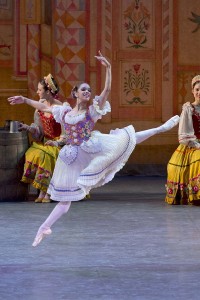My goal has always been to be a principal dancer with ABT [American Ballet Theater]. Before I knew that there’d never been a black woman that was always my goal. I wanted to dance “Odette-Odile” and Kitri in Don Quixote and Aurora in Sleeping Beauty. So that’s still my goal. But knowing that it’s never been done before I think makes me fight even harder.
-Misty Copeland
Pink slippers and prima ballerina dreams are an essential part of the childhoods of many girls. But in the intensely competitive world of professional ballet few girls will struggle as hard, or achieve as high, as Misty Copeland.
Misty Copeland has made history this summer as the first African-American woman to become a principal dancer with the American Ballet Theater. The month before, she was listed by Time magazine as one of their “100 most influential people” and featured on one of five different covers of the issue. A dancer has not appeared on the cover of Time since 1994. Copeland has become a pop culture icon, bringing a growing public awareness to classical ballet. She has starred in an iconic Under Armour commercial and appeared as a guest judge on the popular TV show So You Think You Can Dance.
Copeland began to study ballet in San Pedro, CA at the age of 13, while she was living in a motel room with her mother and five siblings. This is considered a very late start for a ballerina, however, her natural talents meant that she was dancing en pointe only three months after taking her first ballet class, and already winning national ballet contests and a solo role by age 14. In her recent memoir, Life in Motion: An Unlikely Ballerina, Copeland describes advancing as a ballerina while dealing with childhood struggles and racism.
African-American women and girls have long been marginalized in the world of ballet. When Copeland was promoted to a soloist at the American Ballet Theater back in 2007, she was the first African American to obtain that role in over twenty years. Copeland did have trailblazing black ballerinas defying the odds before her, including Janet Collins, the first Black ballerina at the Metropolitan Opera; Janet’s cousin, Carmen de Lavallade; Anne Benna Sims and Nora Kimball, who were the first African American women promoted to solo roles at the American Ballet Theater; and Aesha Ash, the first African American member of the New York City Ballet.
Misty Copeland has continued to shatter barriers for African American women in dance, it will be exciting to what new leaps Copeland and the young dancers she inspires will take next.
-Emily Holm
Junior Girl
Girl Museum Inc.

